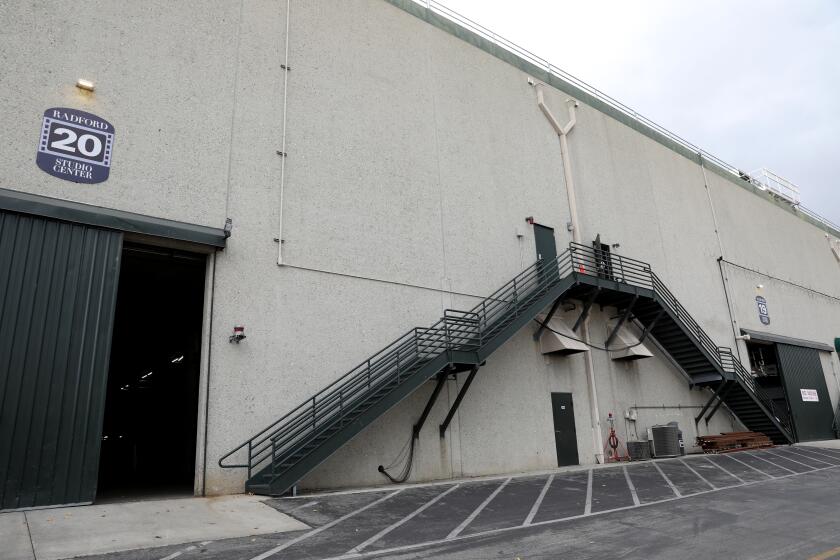Expert Predicts 2% Employment Rise for O.C. : Outlook: Chapman University’s James Doti warns that a slowdown in national recovery could affect local hiring.
Orange County’s fledgling economic recovery is in danger of stalling as a slowdown in national economic growth discourages hiring by local employers, Chapman University President James Doti said Thursday.
Doti, an economist whose forecasts for the county are widely followed by local business planners as they develop their strategies, stuck to his earlier prediction of 2% employment growth this year. That’s about 22,000 new jobs.
But he said the pace of job growth could slow to 1.5% by mid-1995 if his scenario for the national economy proves accurate.
“The increase (in national economic growth) has come to an end. And if it’s peaking, that means that employment growth (in Orange County) will begin to peter out,” he said. His message was the most conservative of three forecasts heard by 600 local business executives at the Orange County Chamber of Commerce & Industry’s annual economic outlook conference here.
Economists from Citicorp Investment Services in New York and First Interstate Bank in Los Angeles said they are optimistic about national economic growth--predicting a 3% hike in the gross domestic product--a key measure of the value of goods and services produced nationwide each year.
But Doti said he expects declining defense spending to weaken the national recovery. That sluggishness should combine with several local factors, including slowed construction activity, to take the edge off Orange County’s economic performance.
Strong foreign trade will help keep the county from tumbling back into recession, he said. As an important distribution center, the county benefits from overall imports to the United States as well as from overall U.S. exports, Doti said.
He bases his projections on information about the national gross domestic product, defense spending, imports and exports, and Orange County construction values. Reliable data about local production, defense spending and trade is not available, he said.
The nation’s gross domestic product is the most important of the four categories because many Orange County businesses sell their goods and services throughout the country.
*
Although Doti was downbeat about the prospects of a growing recovery, a 2% job growth for the year would increase Orange County employment to about 1.14 million jobs and keep it ahead of the rest of the state.
Adrian Sanchez, regional economist for First Interstate Bank, said he expects statewide employment to increase by 1.5% through 1996.
Sanchez said that while California’s economy began recovering this year, employers are adding just 10,000 new jobs a month--a third of the rate at which the state added jobs from 1983 to 1990.
Because of the slow pace, Sanchez said, “a lot of people aren’t convinced that this (recovery) is the real deal.” The conventional wisdom that California will continue to “underperform the U.S. for at least one more year” may be accurate, he said.
California’s recovery seems disappointing because of the rapid growth that occurred before 1990, said Jon Goodman, director of the Entrepreneurial Program at USC.
“You all have lived through a 40-year boom--let me assure you, it was a binge--and now you have one hell of a hangover,” Goodman told a rapt audience.
Job growth is the key to recovery, Goodman said, and California is struggling to keep employers because new information and communications technologies will make it easier for businesses to locate in less expensive areas that are far from their markets.
To compete with less expensive states like Arizona and Utah, California must put a renewed emphasis on public education to attract and hold the companies that make use of the new technologies, she said.
“The entire competitive advantage of the future relies on an educated work force. But it’s getting harder and harder to staff businesses” in the region with well-educated young workers, she said.
Moreover, those well-educated workers that are available are often more knowledgeable about new technologies than their managers, putting a premium on the skills of the young and changing relationships within companies. Without improved education and major business restructuring to take advantage of technical know-how, Goodman warned, “this place is going to look like Detroit.”
Spencer Kaitz, president of the California Cable Television Assn., said the spread of communication technologies such as facsimile machines, cellular phones and electronic mail means people have less tolerance for waiting.
“There’s a message here for all of us . . . that the information superhighway is part of a culture of change,” he said. Businesses that are able to take advantage of the fundamentally lower cost of instant communications will thrive, he said.
Economic Growth Levels Off
The Chapman Leading Indicator Series uses the nation’s gross domestic product and foreign trade balance, along with local defense and construction spending, to forecast Orange County’s non-agricultural employment levels. Percentage change in county employment and indicator series (figures show change from the same quarter of previous year):
Source: Center for Economic Research, Chapman University
More to Read
Inside the business of entertainment
The Wide Shot brings you news, analysis and insights on everything from streaming wars to production — and what it all means for the future.
You may occasionally receive promotional content from the Los Angeles Times.






